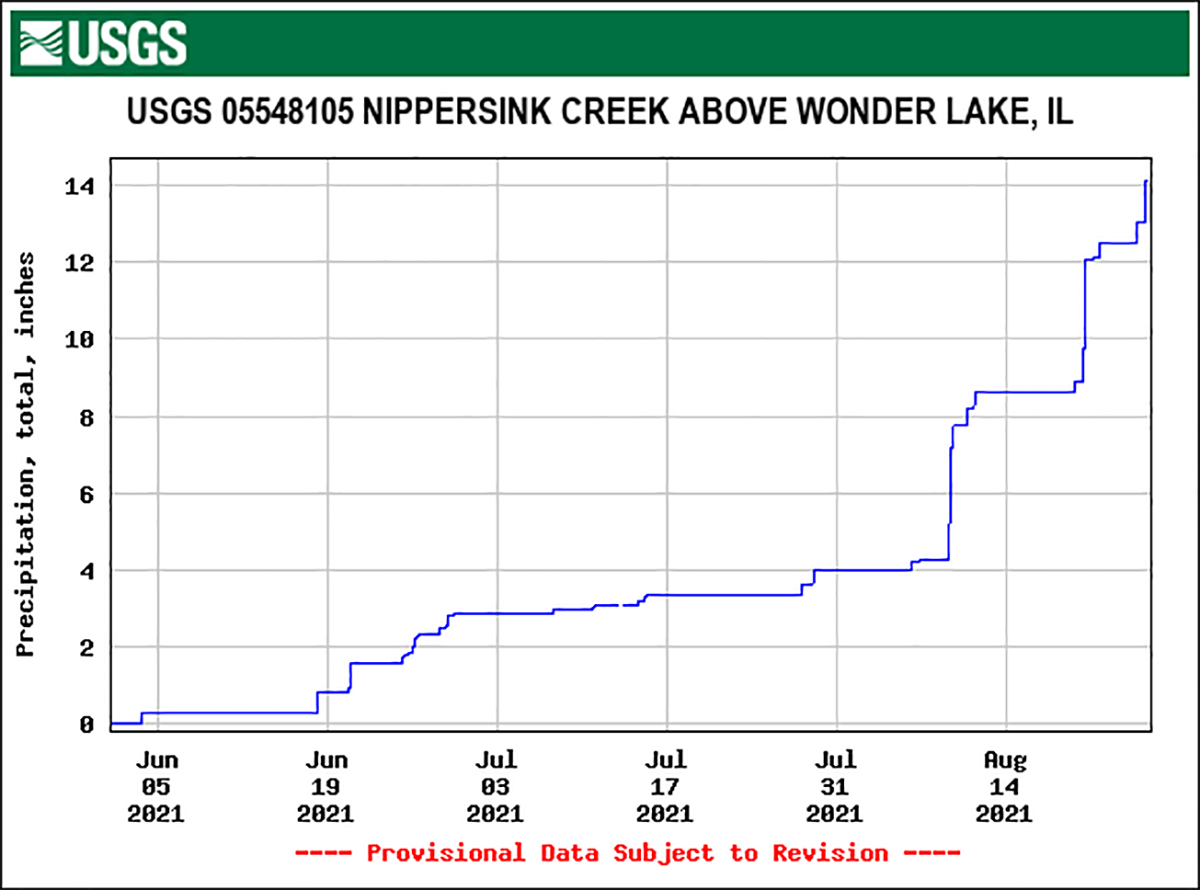1. Our hot dry summer continues. Since June 1, Wonder Lake has received a total of 14 inches of rainfall, as measured at the USGS Thompson Road gage. Fortunately, 10 of those inches of rainfall have occurred since early August, so we might be getting into a wetter period to help improve flow through the lake. With more rain, and as temperatures start to cool down as we move into fall, it is hoped that the algae blooms will begin to finally fade away.

2. There is no “cure” for an algae bloom, particularly on a lake as big as Wonder Lake. The only return to normal is for sufficient rainfall to occur, and temperatures to cool off. As mentioned previously, the dredging of Wonder Lake removed many tons of nutrients from the lakebed, which would have otherwise been available to fuel algae growth. Lakefront landowners are, as always, strongly encouraged to keep lawn fertilizers and grass clippings out of the lake. With the approach of fall, it is critical that leaves are not raked into the lake when they fall, as this is just one more source of un-needed nutrients.
3. The MPOA has received a proposal to conduct the annual inspection of the Wonder Lake Dam, as well as the Wonder Lake Sediment Drying Facility. The inspection will be done in the next month or so by the same engineers that have done the previous 6 inspections. This annual inspection is a requirement under the State permits the MPOA holds for each of these structures. In the past, questions have been raised about the involvement of the U.S. Army Corps of Engineers (USACE) in the monitoring or inspection of the Wonder Lake Dam. Simply stated, the USACE has no involvement in the dam; only the State.
4. The floor of the Wonder Lake Sediment Drying Facility (SDF) was recently mowed to cut back the vegetation growing in the extremely fertile dried sediment. This was done not only to keep the vegetation under control, but also to improve visibility so that a land surveyor can come in and survey the top surface of the dried sediment. By comparing the “new” digital surface to the digital surface of the “as-built” survey generated when the SDF construction was completed, the MPOA should have a much better idea of the actual dried volume of sediment potentially available for sale.
